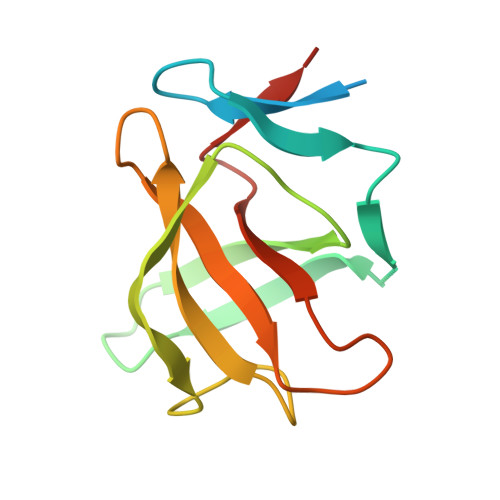Discovery and characterization of potent spiro-isoxazole-based cereblon ligands with a novel binding mode.
Shevalev, R., Bischof, L., Sapegin, A., Bunev, A., Olga, G., Kantin, G., Kalinin, S., Hartmann, M.D.(2024) Eur J Med Chem 270: 116328-116328
- PubMed: 38552426
- DOI: https://doi.org/10.1016/j.ejmech.2024.116328
- Primary Citation of Related Structures:
8RDP, 8RDQ, 8RDR, 8RDS, 8RDT - PubMed Abstract:
The vast majority of current cereblon (CRBN) ligands is based on the thalidomide scaffold, relying on glutarimide as the core binding moiety. With this architecture, most of these ligands inherit the overall binding mode, interactions with neo-substrates, and thereby potentially also the cytotoxic and teratogenic properties of the parent thalidomide. In this work, by incorporating a spiro-linker to the glutarimide moiety, we have generated a new chemotype that exhibits an unprecedented binding mode for glutarimide-based CRBN ligands. In total, 16 spirocyclic glutarimide derivatives incorporating an isoxazole moiety were synthesized and tested for different criteria. In particular, all ligands showed a favorable lipophilicity, and several were able to outperform the binding affinity of thalidomide as a reference. In addition, all compounds showed favorable cytotoxicity profiles in myeloma cell lines and human peripheral blood mononuclear cells. The novel binding mode, which we determined in co-crystal structures, provides explanations for these improved properties: The incorporation of the spiro-isoxazole changes both the conformation of the glutarimide moiety within the canonical tri-trp pocket and the orientation of the protruding moiety. In this new orientation it forms additional hydrophobic interactions and is not available for direct interactions with the canonical neo-substrates. We therefore propose this chemotype as an attractive building block for the design of PROTACs.
Organizational Affiliation:
Institute of Chemistry, Saint Petersburg State University, Saint Petersburg, Russia.

















